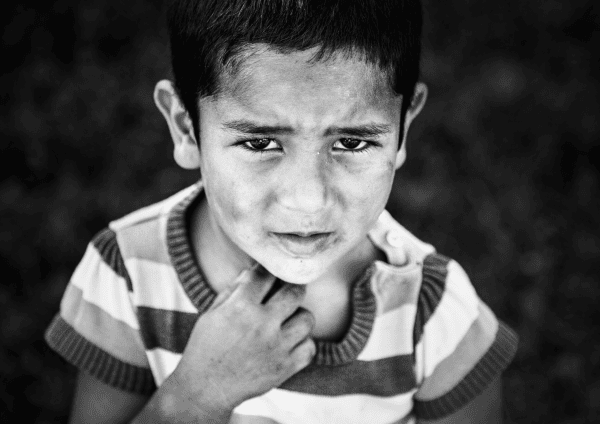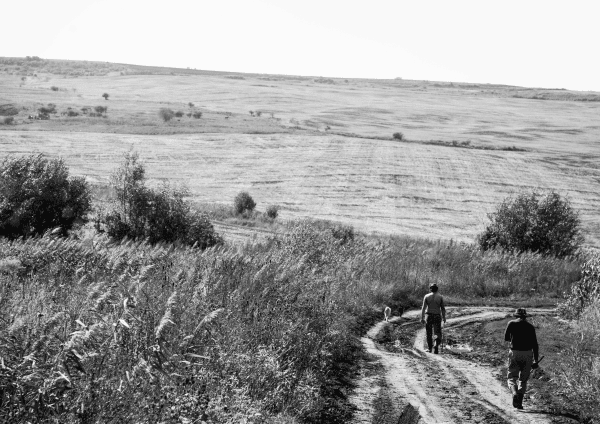With half of Europe’s remaining virgin forest, Romania holds a state of wilderness that has been lost in much of the continent. Sam Sutaria cycles across the country and asks what it could teach the west about rewilding both its landscape and its culture
When my grandfather was a child his senses were his mental paintbrush. Like all children, he absorbed the infinite details of the outside world like a blank canvas. His outlook on the world was shaped and defined by his experiences. My early days were the same, and I relished those infinite details. We both still do. Yet what I see is a very different picture to my grandfather’s. What was normal then is a far cry from the norm now.
I challenge anyone to name a place on this earth that hasn’t changed over the last hundred years, let alone the last thousand. Some of those differences will, of course, be natural: populations fluctuate, diseases spread and rocks erode. But, humankind should toss and turn at night in the knowledge that it is largely down to us.
Blind acceptance of the world the way it is now is a huge barrier to moving forwards, or moving backwards towards a more ecologically sound state. So I decided to find a place that is not so different from the days of my grandfather, and, maybe his grandfather before him.
Having successfully maintained an aversion to Lycra for much of my life, when the opportunity arose to cycle across Romania in aid of children’s environmental education, I surprised myself with my enthusiasm. I cleaned out the local cycling shop, packed my camera and begged friends and relatives to sponsor me.
“We hoped to catch a glimpse into a landscape that we might one day rebuild back home.”
Romania is not usually a name that appears much in everyday conservation. But it should. The country boasts some of the most pristine forest habitat in Europe, and indeed the world. It is a precious resource. Only one percent of Europe’s old growth forest is still intact – of that, half is in the Carpathian mountains of Romania. What’s more, these forests are still home to a wealth of large predators, which is rare for European habitats, and recent studies have shown how vital these animals are for maintaining the balance of entire ecosystems. The reintroduction of wolves in Yellowstone national park, for example, prompted a profound regeneration of that landscape.
Like the rest of the wooded wilds around the world, however, deforestation and illegal logging are decimating trees that have stood sentinel for generations. Some 50 percent of all logging in Romania is illegal. This is having disastrous effects on local wildlife, especially those large predators like wolves and bears that need space. We stand to lose one of the earth’s greatest wildernesses. It was time for me to try and do something about it.
We started our ride on the outskirts of Targu Mures, a city in the northern central belt of the country. Our group was led by Paul Lister, founder of The European Nature Trust (TENT), an organisation dedicated to the preservation and rehabilitation of wild spaces, both in Romania and the Scottish Highlands. Our objective was to raise money and awareness for one of TENT’s most important projects, Wild Kingdom: a children’s mobile education initiative that seeks to engage young people in the protection of their country’s natural resources. At the same time we also hoped to catch a glimpse into a landscape, and way of life, that we might one day rebuild back home.
Within minutes of leaving the city we found ourselves peddling through rural villages and communities that had a joyful, untouched feel. This theme would continue throughout our trip as we bounced along potholed roads, dodging small children and roaming animals. Close to 50 percent of Romania’s population live in rural areas where farming practices have remained the same for generations.

A Romanian child. Photo © Sam Sutaria
Many of these villages are in fact extremely impoverished, with livelihoods entirely based on subsistence farming, husbandry and occasionally tourism ventures. It is the latter that is beginning to change things across Romania. Unless new tourism practices are introduced sensitively, much of Romania’s traditional past could be lost. In the village of Cund, where we spent our first night, an entrepreneur has restored guest houses in the village part owned by some of local residents. Foreign and domestic tourists are encouraged with the prospect of a more traditional holiday and helping local people generate income.
“The power of local people driving their own country’s conservation agenda cannot be underestimated.”
The following few days passed in a blur of spokes, cured meats and a bruising lack of tarmac. We passed through Sighisoara, the birthplace of Vlad The Impaler – inspiration for Bram Stoker’s Dracula – and one of the most well preserved medieval towns in Europe. I felt lost amongst history, legends and the scale of the Transylvanian landscape.
Powering on through the foothills the hulking shapes of the Fagaras mountains seemed to get no closer, and we relished our small snapshots of Romania’s secrets. As dusk fell in Viscri on our fourth day, the cows began to return from pasture. With no guide or encouragement they plodded gracefully homewards, each returning to their own individual stable where they spend the night, cowbells puncturing the still air. We awoke to the sound of clanking urns as farmers walked to collect their milk. These were rituals in stark contrast to the often intensive and industrial methods of westernised farming.
As in North America, hunting across Europe is prevalent and destructive. Governments often look to hunting associations to provide population data on the animals they hunt. The irony is crippling. To fight this, a conservation group in Romania has set up their own hunting association – the only hunting association in the world that doesn’t hunt. It exists only to provide reliable and accurate head counts for certain species. Listening to this group on our penultimate night made the purpose of our trip clear: in a world where education and communication lie at the heart of global conservation practices, the power of local people to drive their own country’s conservation agenda cannot be underestimated.
Like what you’re reading? Get your Positive News subscription here
A week in rural Romania is a week back in time. As we neared our finish atop a grassy ridge overlooking sweeping valleys of forest, our muscles groaned in relief but our feelings were muddled. We were jubilant at finishing our challenge, but distressed by the idea that the vista below may not look the same if we ever return.
Our trip raised enough money to keep Wild Kingdom’s environmental education bus on the road in Romania for 12 months. It will make a difference, but it’s sobering to think that, currently, only three percent of global philanthropy is targeted at environmental causes.
As we departed the next day, I had only one regret. The predators that still roam these forests are confined to the shadows. Our most thrilling animal encounter was not with wolves or bears, but a farmer’s sheepdog snapping at our wheels. But the idea that something wilder could be round the next bend made those wheels turn a little bit faster.

The rural Romanian landscape. Photo © Sam Sutaria
Positive Travel is edited by Aaron Millar. He writes about adventure travel, and personal development through exploring the world, at The Blue Dot Perspective.
